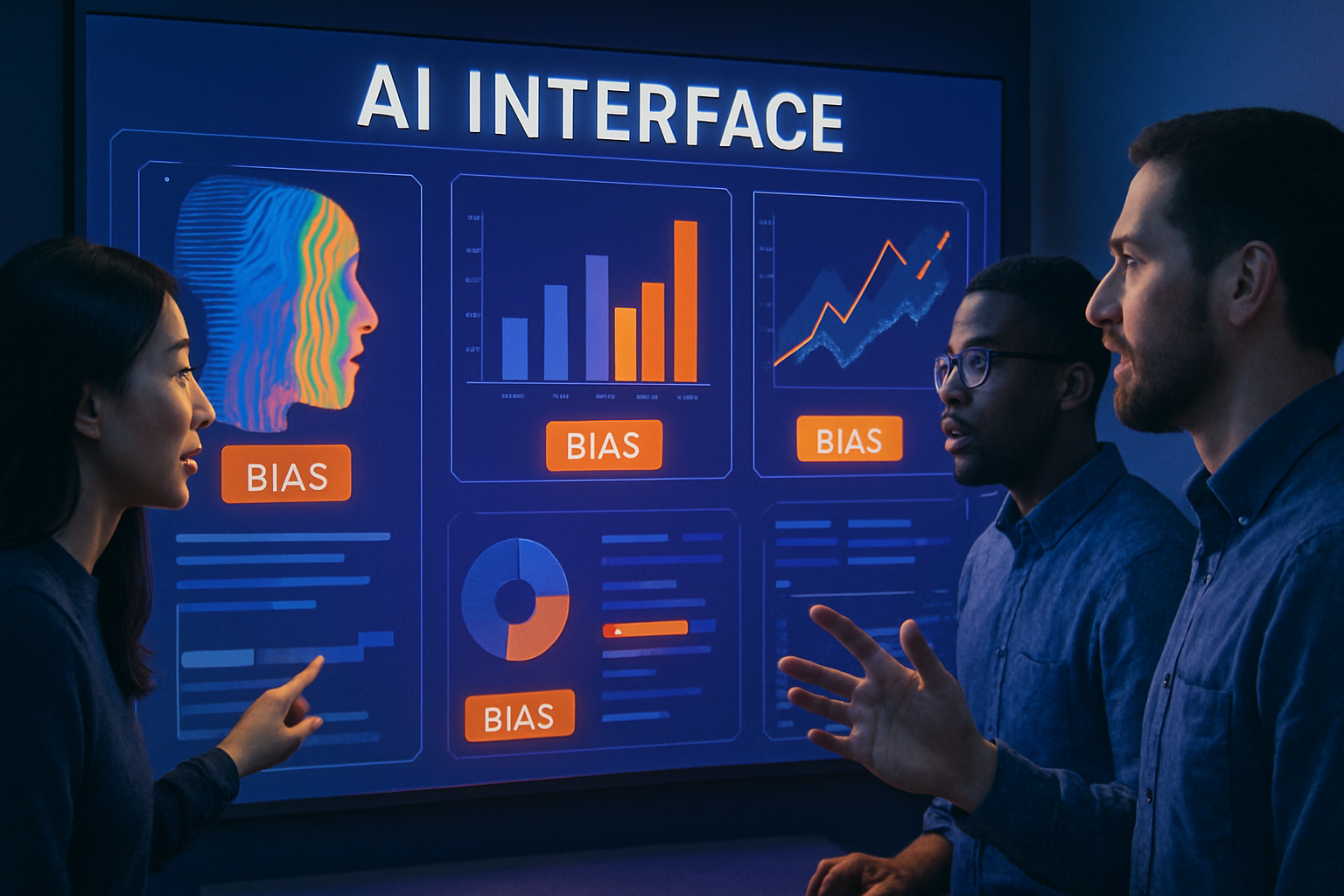AI Bias Explained: A Beginner's Guide to Understanding and Mitigating Bias in Artificial Intelligence
Discover what AI bias is, its causes, and how to mitigate it. Real-world examples and simple explanations for beginners.

Can AI Be Biased? Here's What You Should Know
Artificial intelligence is rapidly changing the world around us. But as AI systems become more prevalent, it's crucial to understand a critical issue: bias. Can AI really be biased? The short answer is yes. But understanding why and how AI becomes biased is essential for responsible AI development and use.
What is AI Bias?
AI bias refers to situations where AI systems produce unfair or discriminatory outcomes. This isn't intentional; it's usually a result of the data, algorithms, or processes used to develop the AI. Bias can manifest in many ways, leading to skewed or prejudiced results.
Why Does AI Become Biased?
Several factors contribute to AI bias:
- Biased Training Data: AI models learn from data. If the data reflects existing societal biases (e.g., gender or racial stereotypes), the AI will likely perpetuate and even amplify those biases.
- Algorithm Design: The algorithms themselves can introduce bias. The choices made by developers when designing the algorithm (e.g., how it prioritizes certain features) can inadvertently lead to biased outcomes.
- Data Collection and Sampling: If the data collected doesn't accurately represent the population the AI is intended to serve, it can result in skewed results. For example, if a facial recognition system is primarily trained on images of one ethnic group, it might not perform as well on others.
- Feedback Loops: AI systems often learn from their own predictions. If an initial bias leads to inaccurate predictions, it can reinforce and worsen the bias over time.
Examples of AI Bias in Action
AI bias isn't just a theoretical problem; it has real-world consequences:
- Facial Recognition: Some facial recognition systems have shown lower accuracy rates for people of color, particularly women of color.
- Hiring Algorithms: AI-powered hiring tools have been found to discriminate against women. One such tool penalized resumes that included words like "women's" or "girls'."
- Loan Applications: AI systems used to assess loan applications can perpetuate discriminatory lending practices.
How to Mitigate AI Bias
Addressing AI bias requires a multi-faceted approach:
- Data Auditing: Carefully examine the training data for biases. Collect diverse and representative datasets.
- Algorithm Transparency: Strive for transparency in algorithm design. Understand how the algorithm makes decisions.
- Bias Detection Tools: Use tools and techniques to detect and measure bias in AI models.
- Regular Monitoring: Continuously monitor AI systems for bias and re-train them as needed.
- Ethical Guidelines: Develop and adhere to ethical guidelines for AI development and deployment.
The Role of Automation in Addressing AI Bias
While AI can be biased, automation tools can also play a crucial role in identifying and mitigating that bias. For instance, you can use automation platforms like Make.com to build workflows that automatically audit your training data for inconsistencies and potential biases. Imagine a scenario where you're developing an AI model to analyze customer feedback. You could use Make.com to connect your data sources (e.g., survey responses, social media mentions) to an AI-powered text analysis tool that flags potentially biased language or sentiment. The platform can then automatically alert your data science team to review and correct the biased data *before* it's used to train your AI model. This proactive approach ensures your AI learns from a cleaner, more equitable dataset, leading to fairer and more reliable outcomes.
Additionally, you can automate the process of A/B testing different versions of your AI model with varying bias mitigation techniques, allowing you to quickly identify and deploy the most effective solutions. This kind of automation empowers you to create more responsible and ethical AI systems, saving time and resources in the long run. Integrating AI bias detection with Make.com ensures continuous monitoring and improvement, leading to fairer AI systems.
The Future of AI and Bias
As AI continues to evolve, addressing bias will become even more critical. We need a collaborative effort involving researchers, developers, policymakers, and the public to ensure that AI is used responsibly and ethically. By understanding the sources of AI bias and taking proactive steps to mitigate it, we can harness the power of AI for good, creating a more equitable and just world for everyone.
Conclusion
AI bias is a complex issue with significant implications. As a beginner in the world of AI, understanding the potential for bias is crucial. By staying informed, advocating for ethical AI practices, and leveraging tools to detect and mitigate bias, you can contribute to a future where AI benefits everyone. Always remember to question the data, scrutinize the algorithms, and prioritize fairness in AI development.
Frequently Asked Questions
What is AI bias?
AI bias occurs when an AI system produces unfair or discriminatory outcomes due to biased data, algorithms, or processes.
How can a beginner use automation tools like Make.com to help with AI bias?
You can use Make.com to automate the process of auditing training data, detecting biased language, and A/B testing different bias mitigation techniques. This helps ensure your AI learns from a cleaner, more equitable dataset.
Is learning about AI bias difficult for someone new to AI?
No, understanding the basic concepts of AI bias is manageable for beginners. Focus on understanding the sources of bias (data, algorithms) and the importance of fairness in AI development.
What are some examples of AI bias in the real world?
Examples include facial recognition systems with lower accuracy for certain demographics, hiring algorithms discriminating against women, and loan applications perpetuating discriminatory lending practices.
Affiliate Disclosure: Some of the links on this site are affiliate links. I earn a small commission if you make a purchase through them—at no extra cost to you. Thank you for your support!